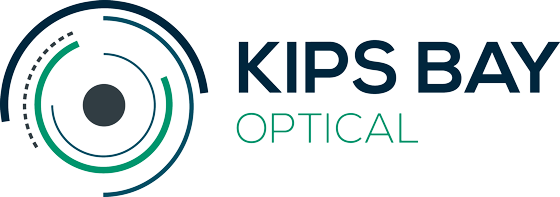
As digital devices become more integrated into daily life, children spend more time on screens than ever. Whether for education or entertainment, this increased screen time exposes young eyes to significant amounts of blue light. At Kips Bay Optical, we aim to educate parents on the potential risks of blue light exposure and provide strategies to protect children's eye health. With our increased use of technology for education and as the back-to-school season approaches, it becomes even more important for parents to be aware of potential vision issues.
Understanding Blue Light and Its Sources
Blue light is a high-energy visible (HEV) light with shorter wavelengths that can penetrate the eyes more deeply. Blue light is naturally present in sunlight. However, digital screens such as smartphones, tablets, computers, and TVs also emit it. The increased use of these devices has raised concerns about the cumulative effects of blue light on children's eyes.
In addition to digital screens, blue light also features in:
- LED lights
- Fluorescent lights
- Electronic devices like gaming consoles
Understanding these sources helps parents proactively manage their children's exposure to preserve their vision.
The Effects of Blue Light on Children's Eyes
Eye Strain and Discomfort
Prolonged exposure to blue light can lead to digital eye strain, characterized by symptoms such as dry eyes, headaches, and blurred vision. Children may experience discomfort and difficulty focusing on tasks after extended screen time.
Disruption of Sleep Patterns
Blue light exposure, especially before bedtime, can interfere with the production of melatonin, a hormone that regulates sleep. This disruption can lead to difficulties falling asleep and poorer sleep quality, affecting a child's overall health and well-being.
Potential Long-Term Effects
While research is ongoing, some studies suggest that excessive blue light exposure may contribute to retinal damage over time. This potential risk highlights the importance of managing screen time and protecting young eyes from prolonged exposure.
Strategies to Protect Your Child's Eyes from Blue Light
Implement the 20-20-20 Rule
Encourage your child to take regular breaks using the 20-20-20 rule: every 20 minutes, look at something 20 feet away for at least 20 seconds. This practice helps reduce eye strain and allows their eyes to rest.
Use Blue Light Filters and Glasses
Many devices now come with built-in blue light filters, which you can activate in the settings. Additionally, you can wear blue light-blocking glasses to reduce exposure. These tools can be particularly useful during extended periods of screen use.
Encourage Outdoor Play
Balancing screen time with outdoor activities is essential. Natural light and physical activity help reduce the time spent on digital devices and promote overall eye health.
Set Screen Time Limits
Establishing and enforcing screen time limits can significantly reduce your child's blue light exposure. Encourage breaks and create a schedule that balances screen time with other activities, ensuring a healthy mix.
Maintain Proper Lighting
Ensure your child uses digital devices in well-lit areas to reduce glare and minimize eye strain. Proper lighting helps create a more comfortable viewing environment and reduces the need for squinting.
Take the First Step to Protect Your Child’s Vision
If your child experiences persistent symptoms of eye strain or sleep disturbances, it may be time to consult an eye care professional. At Kips Bay Optical, our comprehensive eye exams can help identify vision problems. We provide tailored advice on managing blue light exposure effectively.
Our team will help you navigate the challenges of screen time and ensure your child's eyes remain healthy and comfortable. Why not request an eye exam at Kips Bay Optical in New York and take the first step toward safeguarding your child's vision.
